Do you have a question about the Panasonic TH-L32C10 and is the answer not in the manual?
Instructions for safe handling of the power cord and plug.
Warnings related to power source, liquid exposure, and ventilation.
General warnings about placing the TV on unstable surfaces and improper use.
General notes on appliance usage, placement, and auto standby function.
Guide for cleaning the display panel, cabinet, pedestal, and mains plug.
List of accessories included with the TV, such as remote control and batteries.
Information on optional wall brackets and remote control battery installation.
Identification of buttons, sensors, and indicators on the TV's front panel.
Detailed explanation of each button and its function on the remote control.
Instructions for connecting aerials and external video equipment like VCRs and DVD players.
Steps to automatically search and store TV channels and select viewing environment.
How to access and use the TV's on-screen menus for settings.
Procedure to select the preferred language for menus and on-screen information.
Guide to turning on the TV and selecting channels using the remote or TV buttons.
Explanation of functions like Hold (freeze picture) and Display Information Banner.
How to set the automatic turn-off timer and adjust programme-related settings.
Guide to changing the picture's aspect ratio for optimal viewing.
Instructions for switching to and navigating teletext pages.
Description of FASTEXT, TOP, and List modes for teletext.
How to store and recall frequently viewed teletext pages.
Using teletext in multi-window mode and managing updates.
How to select and display connected video or DVD sources via input selection.
Using the TV remote to control playback of connected devices like DVD players.
Procedure for setting remote control codes for different equipment types.
Steps for accessing and navigating the TV's main menu and sub-menus.
Guide to adjusting various settings and using text input for naming.
Overview of settings available in the Picture menu.
Overview of settings available in the Sound menu.
Breakdown of options within the Setup menu (Tuning, Language, System).
Detailed explanations of picture settings like contrast, brightness, colour, and tint.
Detailed explanations of sound settings like bass, treble, balance, and surround.
Configuration options for timers, parental locks, tuning, and language.
Settings for display, VIERA Link, system information, and colour systems.
Steps to access the menu for customizing input label names.
How to label or skip input terminals for easier identification.
How to lock specific channels or AV inputs using a PIN.
Viewing and managing the list of locked channels and inputs.
Steps to access the menu for editing the TV channel list.
How to hide or skip channels from the regular channel list.
Procedures for changing channel names and their order.
Steps to access the TV's channel tuning menu.
Guide for automatically retuning all available TV channels.
Steps for manually tuning individual TV channels and adjusting sound/colour.
Navigating to the System Menu to find the reset option.
Instructions for resetting the TV to its original factory settings.
How to connect a PC and select it as the TV's input source.
Guide to optimizing PC display settings like resolution and position on the TV.
Instructions for safely inserting and removing SD cards from the TV.
How to navigate folders and view photo files from an SD card.
How to configure and start a slideshow of photos from the SD card.
Methods for organizing photos by recording date or month for easier viewing.
Explanation of the VIERA Link function and its benefits for device interoperability.
Overview of features and connection types for VIERA Link compatible devices.
Diagrams showing how to connect various AV devices for VIERA Link.
Specific instructions for connecting audio amplifiers for VIERA Link audio output.
How VIERA Link automatically switches input sources when devices are operated.
Features for managing power consumption and standby modes of connected equipment.
How to record the current TV program directly using a connected DIGA Recorder.
Instructions for stopping the direct TV recording process.
How to pause a live TV program and resume playback later.
Instructions for stopping the pause function and returning to live TV broadcast.
How to access the menus of connected devices via VIERA Link.
Using the TV remote to control functions of connected equipment.
Choosing between TV speakers and external theatre speakers.
Adjusting the volume of external theatre speakers.
How to open the VIERA Tools menu for quick access to features.
Guide to using features like VIERA Link Control, Live TV Pause, and Photo Slideshow.
Diagrams showing recommended connections for various equipment like VCRs and PCs.
Table indicating which equipment is compatible with each terminal.
Specifications and connection methods for HDMI interface.
Information on connecting a PC, including signal types and connectors.
Channel allocation tables for different regions and broadcast systems.
Explanation of STEREO, SUB II, and MONO audio modes for sound selection.
Settings for NICAM and A2 German broadcast types for sound selection.
Guidelines for safely handling and using SD cards with the TV.
Information on supported photo formats and common on-screen messages.
Details on HDMI signal types, frequencies, and compatibility.
Specifications for PC signals, including resolution and frequency ranges.
Chart detailing supported COMPONENT and HDMI signals.
Table of horizontal and vertical frequencies for PC signals.
Solutions for common issues like noise, spots, and distorted images.
Explanations for normal unit heat and panel movement.
Troubleshooting steps for no image, distorted image, or no sound issues.
Solutions for connection issues, HDMI problems, and standby mode.
Technical specifications for power consumption, display size, and audio output.
Details on input/output terminals, dimensions, and mass.
Instructions for safe handling of the power cord and plug.
Warnings related to power source, liquid exposure, and ventilation.
General warnings about placing the TV on unstable surfaces and improper use.
General notes on appliance usage, placement, and auto standby function.
Guide for cleaning the display panel, cabinet, pedestal, and mains plug.
List of accessories included with the TV, such as remote control and batteries.
Information on optional wall brackets and remote control battery installation.
Identification of buttons, sensors, and indicators on the TV's front panel.
Detailed explanation of each button and its function on the remote control.
Instructions for connecting aerials and external video equipment like VCRs and DVD players.
Steps to automatically search and store TV channels and select viewing environment.
How to access and use the TV's on-screen menus for settings.
Procedure to select the preferred language for menus and on-screen information.
Guide to turning on the TV and selecting channels using the remote or TV buttons.
Explanation of functions like Hold (freeze picture) and Display Information Banner.
How to set the automatic turn-off timer and adjust programme-related settings.
Guide to changing the picture's aspect ratio for optimal viewing.
Instructions for switching to and navigating teletext pages.
Description of FASTEXT, TOP, and List modes for teletext.
How to store and recall frequently viewed teletext pages.
Using teletext in multi-window mode and managing updates.
How to select and display connected video or DVD sources via input selection.
Using the TV remote to control playback of connected devices like DVD players.
Procedure for setting remote control codes for different equipment types.
Steps for accessing and navigating the TV's main menu and sub-menus.
Guide to adjusting various settings and using text input for naming.
Overview of settings available in the Picture menu.
Overview of settings available in the Sound menu.
Breakdown of options within the Setup menu (Tuning, Language, System).
Detailed explanations of picture settings like contrast, brightness, colour, and tint.
Detailed explanations of sound settings like bass, treble, balance, and surround.
Configuration options for timers, parental locks, tuning, and language.
Settings for display, VIERA Link, system information, and colour systems.
Steps to access the menu for customizing input label names.
How to label or skip input terminals for easier identification.
How to lock specific channels or AV inputs using a PIN.
Viewing and managing the list of locked channels and inputs.
Steps to access the menu for editing the TV channel list.
How to hide or skip channels from the regular channel list.
Procedures for changing channel names and their order.
Steps to access the TV's channel tuning menu.
Guide for automatically retuning all available TV channels.
Steps for manually tuning individual TV channels and adjusting sound/colour.
Navigating to the System Menu to find the reset option.
Instructions for resetting the TV to its original factory settings.
How to connect a PC and select it as the TV's input source.
Guide to optimizing PC display settings like resolution and position on the TV.
Instructions for safely inserting and removing SD cards from the TV.
How to navigate folders and view photo files from an SD card.
How to configure and start a slideshow of photos from the SD card.
Methods for organizing photos by recording date or month for easier viewing.
Explanation of the VIERA Link function and its benefits for device interoperability.
Overview of features and connection types for VIERA Link compatible devices.
Diagrams showing how to connect various AV devices for VIERA Link.
Specific instructions for connecting audio amplifiers for VIERA Link audio output.
How VIERA Link automatically switches input sources when devices are operated.
Features for managing power consumption and standby modes of connected equipment.
How to record the current TV program directly using a connected DIGA Recorder.
Instructions for stopping the direct TV recording process.
How to pause a live TV program and resume playback later.
Instructions for stopping the pause function and returning to live TV broadcast.
How to access the menus of connected devices via VIERA Link.
Using the TV remote to control functions of connected equipment.
Choosing between TV speakers and external theatre speakers.
Adjusting the volume of external theatre speakers.
How to open the VIERA Tools menu for quick access to features.
Guide to using features like VIERA Link Control, Live TV Pause, and Photo Slideshow.
Diagrams showing recommended connections for various equipment like VCRs and PCs.
Table indicating which equipment is compatible with each terminal.
Specifications and connection methods for HDMI interface.
Information on connecting a PC, including signal types and connectors.
Channel allocation tables for different regions and broadcast systems.
Explanation of STEREO, SUB II, and MONO audio modes for sound selection.
Settings for NICAM and A2 German broadcast types for sound selection.
Guidelines for safely handling and using SD cards with the TV.
Information on supported photo formats and common on-screen messages.
Details on HDMI signal types, frequencies, and compatibility.
Specifications for PC signals, including resolution and frequency ranges.
Chart detailing supported COMPONENT and HDMI signals.
Table of horizontal and vertical frequencies for PC signals.
Solutions for common issues like noise, spots, and distorted images.
Explanations for normal unit heat and panel movement.
Troubleshooting steps for no image, distorted image, or no sound issues.
Solutions for connection issues, HDMI problems, and standby mode.
Technical specifications for power consumption, display size, and audio output.
Details on input/output terminals, dimensions, and mass.
| Screen Size | 32 inches |
|---|---|
| Resolution | 1366 x 768 |
| Display Type | LCD |
| Aspect Ratio | 16:9 |
| Brightness | 500 cd/m² |
| Contrast Ratio | 10000:1 |
| Audio Output | 10W x 2 |
| HDMI Ports | 2 |
| USB Ports | 1 |
| Component Video Input | 1 |
| Composite Video Input | 1 |
| PC Input | 1 |
| Viewing Angle | 178 degrees |
| Power Consumption | 110W |
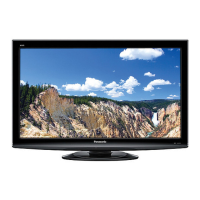
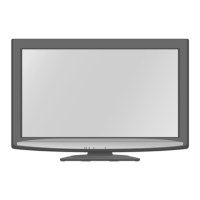
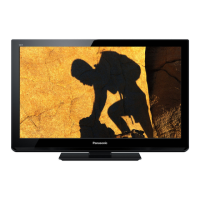
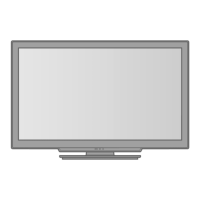

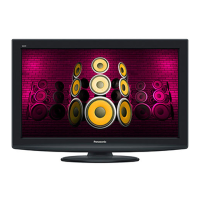
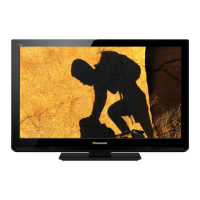



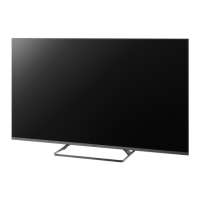
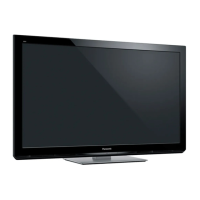
